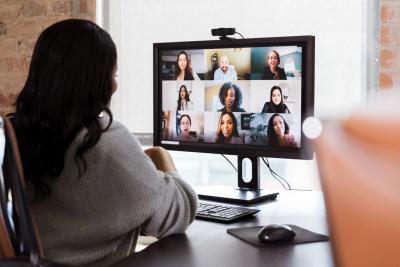Thought Leadership

by Donna Dorsey
Senior Vice President, Chief People and Diversity Officer
One of my first jobs out of college was with the City of Chicago’s Department of Personnel. More recently, before the COVID-19 pandemic, my title at Navistar was Chief Human Resources Officer (CHRO). But it’s now become clear none of this terminology really describes my focus, or the focus that is needed at our company. In these challenging times, we need a more personal title that reflects the company’s broad emphasis on people and its full commitment to diversity. That’s why my new self-proclaimed title is Chief People and Diversity Officer.
One underlying reason why the title needed changing – one that predates the pandemic – is that the Diversity and Inclusion organization, which is part of the team I lead, includes supplier diversity as well as workforce diversity. We brought these groups together about a year ago. By doing this, we are supporting the underlying value of equity, for suppliers as well as our own people.
This broader mission means looking for new ways to create opportunity. And ironically, COVID-19 has accelerated at least one such avenue.
While the pandemic has generated whole new areas of stress for Navistar employees, it also has facilitated at least one new way of expressing and even relieving that stress. This is a series of online discussion sessions entitled “Shifting Gears.” The online sessions were at first necessary, as local shelter-in-place orders required our working remotely, and we talked about things like being flexible but focused, or working from home with children. But the sessions continued even after those orders were lifted, because they offer unique advantages, including new, more personal ways of interacting with each other.
Moderated by our Associate Director of Diversity and Inclusion, Nicole Wiggins, “Shifting Gears” uses this simple trucking metaphor to provide our people with a way to change the subject – expanding from our daily business focus to a discussion of our common humanity. I use the phrase “physically distanced while socially connecting.”
During these online sessions, people have used Teams technology to “raise their hands” and speak out on an array of topics. They’ve shared their perspectives about everything from fear of the virus to what to do about child care. And after George Floyd’s death, they confronted another persistent plague: racism.
While it is personally heart wrenching and important to me, the mother of three Black boys, it was an eye opener for many of my other colleagues to hear about the fears that almost all parents of Black children feel when their kids leave the house. One veteran Navistar employee was moved to tears by his own deep expression of gratitude over being empowered to share his personal feelings on this subject in such a public forum.
The “Shifting Gears” sessions have also helped us identify people, whatever their background/ethnicity, who courageously express themselves publicly, in constructive ways, in order to foster meaningful dialogue. We’ve followed up with multiple individuals who’ve contributed in this way, and asked them if they’d be willing to co-facilitate future public forums, take part in a focus group, or help tackle a critical workplace issue.
Truth to tell, working virtually has actually brought us together in new ways. The same streaming technology that has opened us up to each other has also proven effective in helping us learn important leadership skills, like listening and empathy. These skills are especially critical in the age of “Industry 4.0,” when the market is demanding that innovation take place at unprecedented speed. For Navistar, this means a new, more agile approach to working, learning and leading that we are calling “People 4.0.”
Illustrating this approach, a recent online training event brought together 150 of the company’s top leaders to discuss the importance of empathy as an important part of their leadership toolkit. They split up into virtual breakout sessions to gain experience demonstrating empathetic leadership when faced with issues like racism and childcare concerns. This “just-in-time” approach to learning provided our leaders with actionable insights they could immediately apply to their daily work – addressing their people’s concerns in real time, at the moment of need.
Irrespective of specific tools, “People” and “Diversity” are relevant concepts for our employees, our suppliers, our communities and other stakeholders. The common denominator is that our human resources team will help facilitate opportunities for all of the above – helping them find new spaces where they can thrive.
Building on our commitment, new approaches to learning are fostering new types of leading, which in turn are enabling new ways of working together. These newly implemented approaches are allowing us to accelerate the pace of change – supporting new opportunities for individuals’ careers, for our company’s business, and hopefully for society.